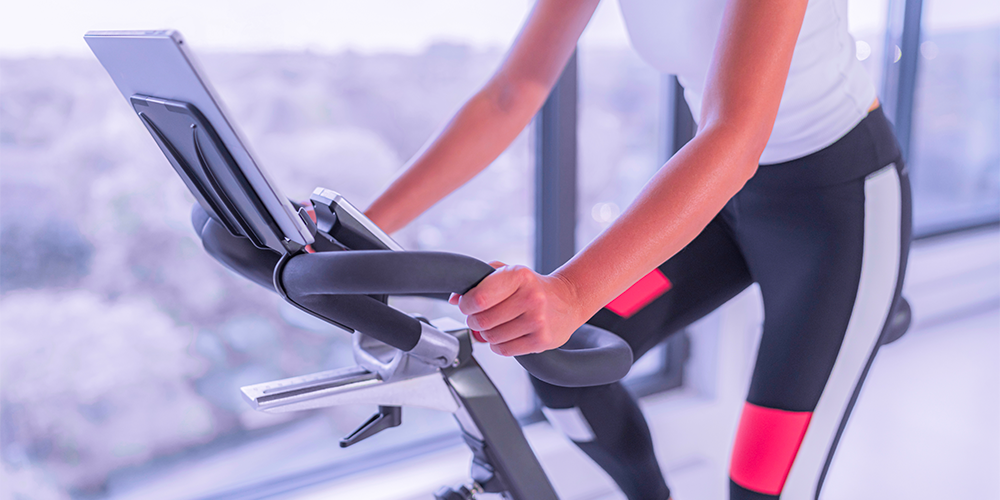Indoor training can be an essential part of an endurance athlete’s training program. In this article, we will explore five effective methods to train key muscles intended for cycling, running and cross-country skiing.
Indoor Training – Winter Solution for Perfect Form
The conclusion of the racing season and the arrival of winter, with its short, cold days, make winter workouts challenging. That’s when the gym becomes our secret ally for maintaining form in the off-season and strengthening key muscles for future competitive goals. Although indoor training might be perceived as boring, with the right amount of stimulation and the proper focus, these workouts will greatly improve your performance, making you fully appreciate the value of indoor sessions.
Here are 5 strategies to successfully tackle indoor workouts:
1. Dynamic warm-up
Before diving into the actual training, devoting time to dynamic warm-up is crucial. Dynamic stretching exercises form the basis of effective preparation, allowing you to stretch muscles, increase joint mobility and prevent injury. Exercises such as lunges, lateral swings, outstretched leg lunges, knee lifts, and leg and ankle rotations prepare your body for athletic performance and optimize muscle readiness. Perform these exercises gradually, avoiding quick or abrupt movements, and don’t forget to incorporate some upper body exercises.
2. High-intensity interval training (HIIT)
Whether the focus is on cycling, running or cross-country skiing, HIIT training is an excellent ally for improving endurance and strengthening key muscles. Here are some practical examples:
- Alternate periods of maximal effort with short recovery periods. For example, pedal or run at maximum intensity for 30 seconds, followed by 30 seconds of active recovery.
- A common formula is using a 2:1 ratio between the duration of the high-intensity phase and the duration of the recovery phase. For example, 30 seconds of high intensity and 15 seconds of active recovery. However, this exercise/recovery ratio is very subjective and variable.
- Do 10″ of high-intensity sprinting and 10″ of active recovery. Then increase to 20″/20″, 30″/30″, 40″/40″, 50″/50″, 60″/60″ and then start again. Remember that the ideal duration of a HIIT workout is 20-30 minutes.
You will notice that each load is followed by a recovery phase, but not full recovery. This is the prerequisite of HIIT, regardless of intensity. This stimulating approach helps to optimize energy intake, involving both anaerobic and aerobic combustion, essential for an effective workout.
3. Simulation of climbs and descents
Especially for cyclists, simulating climbs and descents is crucial. Indoor training provides an opportunity to deliver specific stimuli around and beyond threshold power, optimizing uphill and downhill endurance. The reasons for this are many:
- Elimination of external factors such as gravity, wind, traffic, potholes
- Optimal biomechanical efficiency
- Intensity defined according to your own capabilities
- Optimization of power output and cadence
- Specific performance monitoring
Therefore, the advice is to increase resistance during training sessions to simulate the fatigue of an ascent and lower it during descents to allow the muscles to recover. This approach will improve strength, agility, and cycling-specific endurance.
4. Core strengthening
Core strength, often overlooked, is crucial for any endurance athlete, both to optimize athletic performance and to prevent injury. Exercises such as planks, crunches, superman pulls, leg lifts, and the use of a stability ball improve stability, posture, and endurance during prolonged efforts, preventing muscle imbalances. Varying the exercises allows you to identify those best suited to your training characteristics and goals.
5. Training Variation
It is well known that the greatest progress is achieved through training variety. This also applies to indoor workouts, where monotony can become a hindrance and lead to a loss of motivation. At the gym, you have a wide choice of equipment at your disposal: take advantage of different modalities such as the elliptical, exercise bike, treadmill, rowing machine or climbmill. By involving all muscle groups and adding variety to your training schedule, you’ll fight boredom and create new workout stimuli useful for optimizing your progress.
In conclusion, indoor training for endurance athletes presents itself as much more than just a seasonal alternative. By wisely integrating these practices into your routine, you can strengthen key muscles, improve strength, endurance, and technique. Get ready to face the challenges of the upcoming outdoor season with determination and success!
You may also be interested in:
Create an AI-based training plan for triathlon, cycling, and running with 2PEAK that adapts to your performance after each workout. Download the app and start revolutionizing your training.


